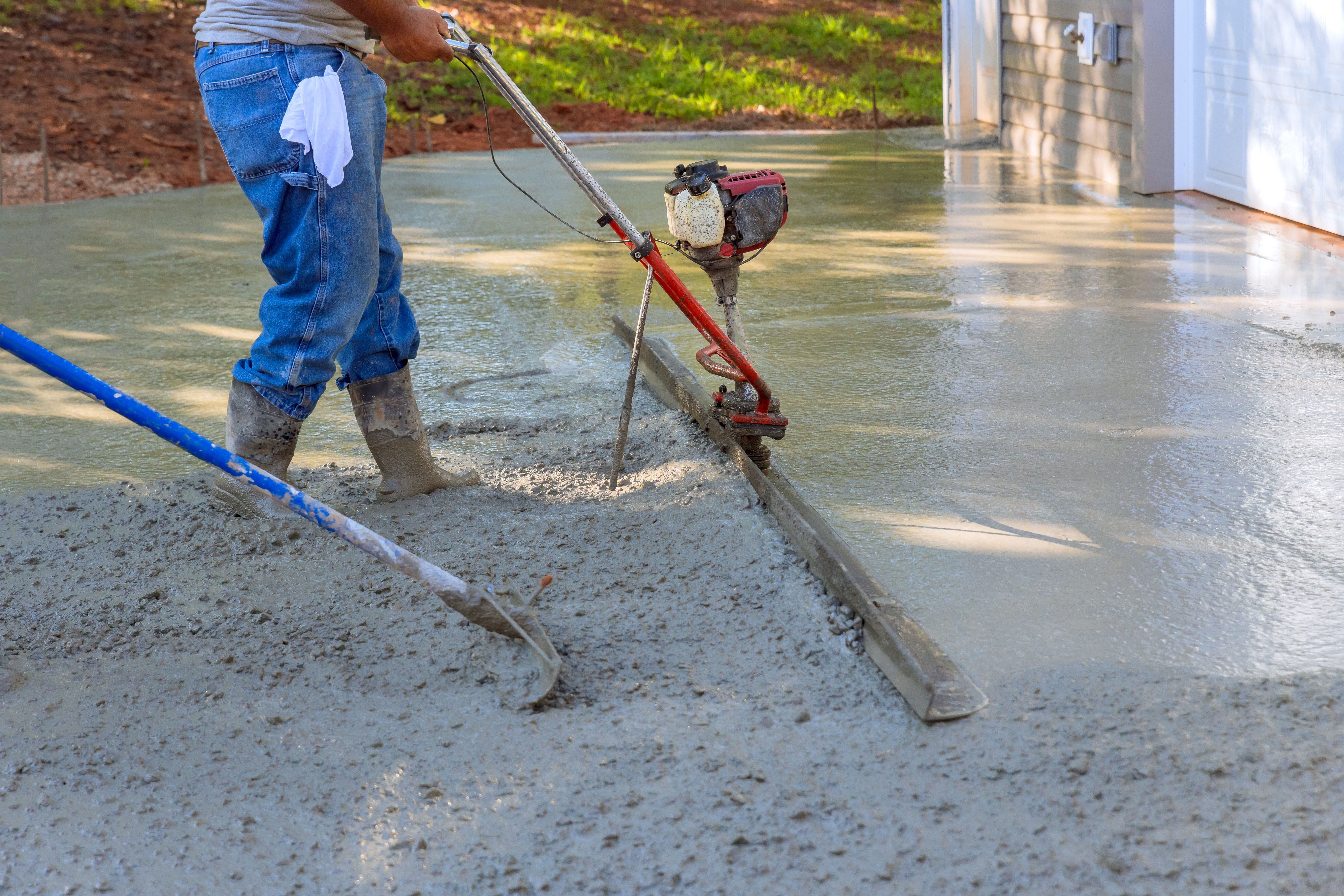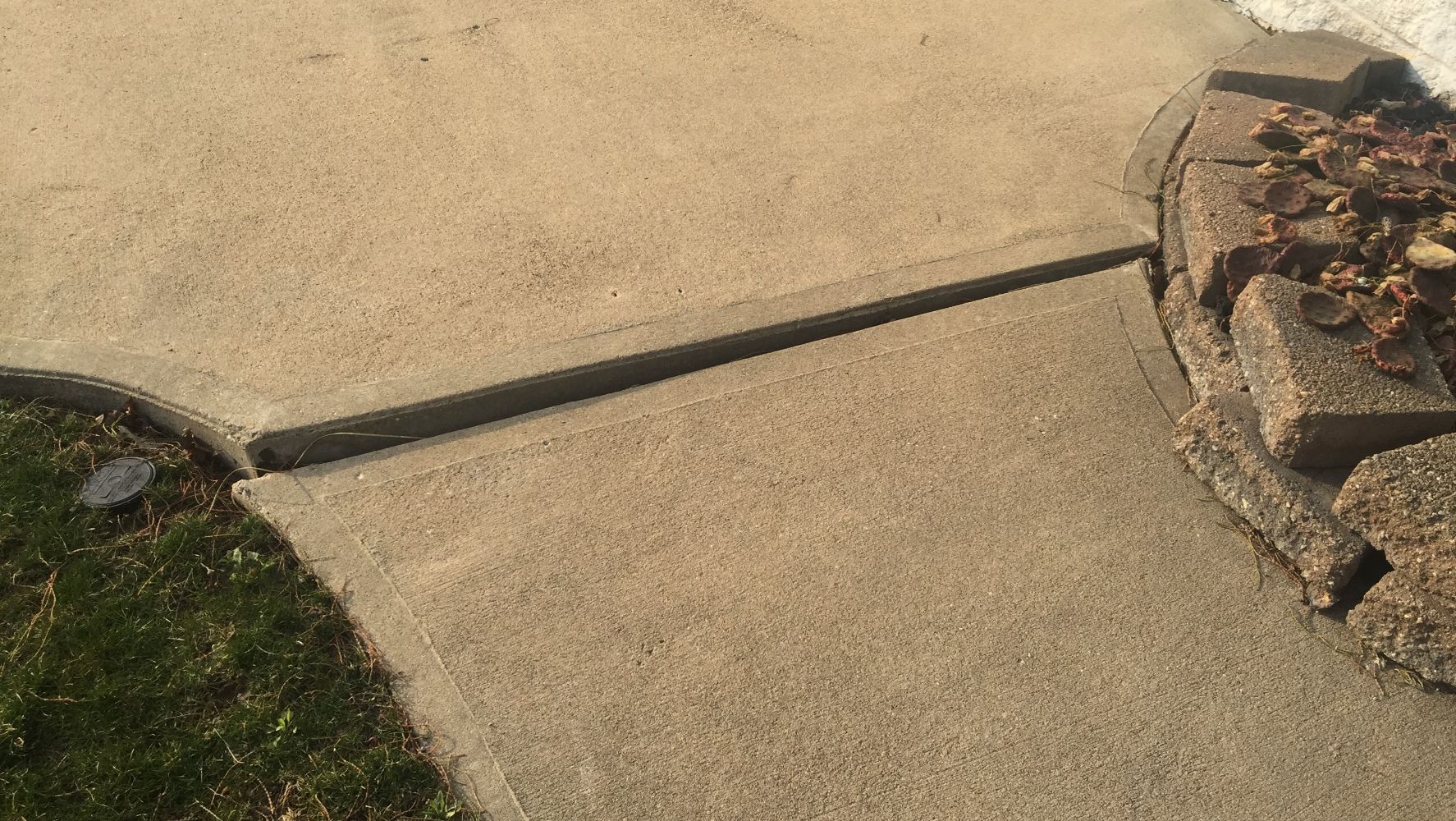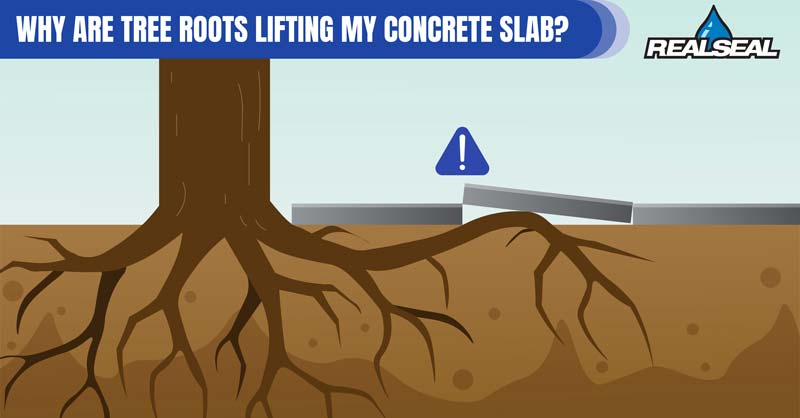Your concrete driveway is more than just a place to park your car. It’s a vital part of your home’s curb appeal and functionality.
But what happens when you notice parts of it lifting or shifting? Not only can this be an eyesore, but it can also pose safety risks and lead to costly repairs if not addressed promptly. You might feel puzzled and frustrated, wondering why this is happening to your driveway.
Is it the weather, poor installation, or something else entirely? Understanding the root causes of this issue is crucial. By gaining insights into the reasons behind your driveway’s unexpected movements, you can take proactive steps to fix it and prevent future problems. We’ll explore the common causes of driveway lifting and provide you with practical solutions. Discover how to protect your investment and restore peace of mind, ensuring that your driveway remains a safe and attractive part of your home. Keep reading to unlock the secrets to a stable, long-lasting driveway.
Common Causes Of Driveway Lifting
Concrete driveways often lift due to tree roots pushing from underneath. Expanding soil from heavy rainfall or freezing temperatures can also cause this. Poor installation or drainage issues might contribute as well.
Concrete driveways can lift for several reasons. Understanding these causes can help prevent future issues. Identifying the root cause is key to effective repair. Let’s explore the common causes of driveway lifting.Tree Roots Impact
Tree roots often grow beneath driveways. They seek moisture and nutrients. As they expand, they can lift concrete slabs. This creates uneven surfaces. Large trees near driveways pose a higher risk. Roots can crack concrete over time. Regular root maintenance is essential.Soil Erosion And Movement
Soil erosion weakens the ground beneath driveways. Heavy rain can wash away soil. This leads to unstable surfaces. As the soil shifts, concrete can lift. Poor drainage systems worsen the problem. Addressing soil erosion early is crucial.Moisture And Water Damage
Excessive moisture can damage concrete driveways. Water seeps into small cracks. During cold weather, it freezes and expands. This expansion causes lifting and cracking. Leaky gutters can worsen this issue. Keeping water away from driveways is vital.Poor Installation Practices
Improper installation can lead to driveway lifting. Using low-quality materials weakens the structure. Inadequate compaction of the base is another factor. Without proper preparation, concrete may not settle correctly. Skilled professionals ensure better outcomes.Environmental Factors
Environmental factors play a significant role in concrete driveway lifting. The natural world around us can affect the structural integrity of concrete. Understanding these factors helps homeowners tackle issues effectively.
Seasonal Changes
Seasonal changes can impact your driveway. In spring, the ground thaws and expands. This movement can push concrete slabs upward. Summer heat causes moisture in the ground to evaporate. The concrete may shift due to the dry soil. Autumn brings more rain, which saturates the ground. This added moisture can cause the concrete to lift.
Freeze-thaw Cycles
Freeze-thaw cycles are common in colder climates. Water enters cracks in the concrete. As temperatures drop, the water freezes and expands. This expansion puts pressure on the concrete. When temperatures rise, the ice melts. The concrete may settle unevenly during the thaw. Repeated cycles lead to noticeable lifting.
Extreme Weather Conditions
Extreme weather conditions can accelerate driveway lifting. Heavy rainfall can saturate the soil beneath the concrete. This saturation can lead to ground movement. Strong winds can also affect the surrounding environment. The constant pressure can shift the concrete slabs. Droughts cause the soil to dry and contract. This can lead to sinking and lifting issues.
Construction Material Issues
Your concrete driveway is a crucial part of your home, offering convenience and enhancing curb appeal. But what if it starts lifting? While many factors can contribute to this issue, construction material problems are often at the heart of it. Understanding these can help you address the problem effectively.
Quality Of Concrete Mix
Ever noticed how some driveways stand the test of time, while others seem to crumble at the first sign of trouble? The secret often lies in the concrete mix used during construction. A poor mix can lead to weak spots, causing your driveway to lift. You might think all concrete is the same, but variations exist in terms of ingredient quality and ratios.
Imagine using sand that’s too fine or gravel that’s not the right size. It’s like baking a cake with the wrong flour; the outcome isn’t pretty. A good mix should be balanced with the right proportions of cement, sand, and gravel. Ask your contractor about the mix they plan to use, and don’t hesitate to request details. It’s your driveway, after all.
Inadequate Reinforcement
Have you ever wondered why some driveways seem sturdier than others? Reinforcement plays a key role here. Without proper reinforcement, the concrete is more susceptible to lifting. Steel bars or mesh are often embedded to strengthen the structure. But what if your contractor skimped on these materials?
Think of concrete like a skeleton without bones. It needs reinforcement to hold together under pressure. When reinforcing materials are inadequate or improperly placed, your driveway can lift or crack. Inquire about reinforcement methods and materials during construction. Knowing the specifics can save you from future headaches.
As you consider solutions, ask yourself: Is it worth the cost to fix the problem now, or risk further damage down the line? Your driveway is more than a pathway; it’s an investment in your home’s value and functionality. Keep these insights in mind to make informed decisions that protect your investment.

Credit: www.a1concrete.com
Signs Of Driveway Lifting
Have you noticed anything unusual about your concrete driveway lately? Driveway lifting can be an unexpected nuisance, affecting not just the aesthetics but also the functionality of your driveway. Understanding the signs of driveway lifting can help you address the issue before it becomes a bigger problem. Let’s delve into some telltale indicators that your driveway might be lifting.
Visible Cracks And Gaps
One of the most common signs of driveway lifting is the appearance of visible cracks and gaps. These can start small but quickly become more prominent, disrupting the smooth surface. Picture yourself driving home, only to find your car bumping over unexpected cracks. It’s not just annoying; it can be damaging over time. Regularly inspecting your driveway for these cracks can prevent further deterioration.
Uneven Surface
An uneven surface is another clear sign that your concrete driveway is lifting. You might notice that one section of the driveway is higher than another. This could result in a challenging walking or driving experience. Think about how uneven surfaces can lead to accidents or even vehicle damage. If you find your driveway resembling a mini roller-coaster, it’s time to take action!
Water Pooling Issues
Do you see water pooling in certain areas after rain? This could be a sign that your driveway is lifting. The uneven surface causes water to accumulate instead of draining properly. Over time, this can lead to water damage and further weaken the concrete. Consider how pooling water can become a breeding ground for mosquitoes, turning your driveway into an unpleasant space.
Have you encountered any of these signs? Addressing driveway lifting early can save you from future headaches and expenses. What steps will you take to ensure your driveway remains in good condition?
Preventive Measures
Concrete driveways are durable but can sometimes lift over time. This lifting can cause tripping hazards and damage. Implementing preventive measures can help maintain their condition. Below, we explore essential steps to prevent driveway lifting.
Regular Maintenance
Regular maintenance is key to a long-lasting driveway. Inspect the surface for cracks or holes. Fill any gaps promptly to prevent water seepage. Cleaning the driveway removes debris and prevents buildup. This routine care keeps your driveway in good condition.
Proper Drainage Solutions
Proper drainage prevents water accumulation under the driveway. Ensure gutters and downspouts direct water away. Installing a French drain can help manage excess water. Good drainage reduces soil erosion and supports the driveway’s stability.
Choosing Durable Materials
Durable materials enhance your driveway’s lifespan. High-quality concrete resists wear and tear. Consider additives for extra strength. Discuss options with a professional to select the best materials. Quality materials are a wise investment for your driveway.
Repair Options
Concrete driveways often lift due to tree roots or soil expansion. Addressing these issues can prevent further damage. Repair options include slab jacking or replacing affected sections to ensure stability.
Repairing a lifted concrete driveway might seem daunting, but there are several effective options to bring it back to its former glory. Whether you’re dealing with minor lifting or significant upheaval, knowing your options can save time and money. Let’s dive into some practical repair methods that can help you tackle this common problem.Slab Jacking
Slab jacking is a technique that involves injecting a grout mixture beneath the concrete. The grout, typically a mix of sand, cement, and other additives, fills in the voids and lifts the slab back into place. It’s like giving your driveway a gentle push from underneath. This method is less invasive and cost-effective compared to replacing the entire slab. One afternoon, my neighbor had slab jacking done on his driveway, and he was amazed at how quickly it was fixed. This could be a viable option if you’re looking for minimal disruption. Have you ever considered how much simpler repairs can be with the right technique?Concrete Resurfacing
Concrete resurfacing is perfect for cosmetic fixes. This process involves adding a thin layer of new concrete or overlay on top of the existing surface. It can smooth out uneven areas and refresh the appearance of your driveway. I once helped a friend resurface her driveway, and the transformation was incredible. It not only looked brand new but also added value to her home. If your driveway is structurally sound but just needs a facelift, resurfacing might be your answer. What if refreshing your driveway was as easy as changing a coat of paint?Professional Repair Services
Sometimes, hiring professional repair services is the best decision, especially for complex issues. Experts can assess the root cause of the lifting, whether it’s tree roots or soil erosion, and recommend the most effective solution. A few years back, I opted for professional help when my driveway lifted due to a plumbing leak underneath. The team efficiently identified the problem and fixed it, saving me from further headaches. Could it be time to call in the pros for a thorough assessment? Repairing your concrete driveway doesn’t have to be a Herculean task. With the right approach and knowledge, you can choose the best option to restore your driveway, ensuring safety and aesthetics.Long-term Solutions
Concrete driveway lifting can be frustrating. Fixing it requires understanding long-term solutions. Addressing the root causes prevents future problems. Let’s explore effective strategies. These solutions ensure your driveway stays level and safe for years.
Root Barrier Installation
Tree roots often cause driveway lifting. Root barrier installation can help. This technique involves placing a physical barrier. It blocks roots from reaching your driveway. The barrier redirects roots, preventing damage. This solution is effective and long-lasting.
Soil Stabilization Techniques
Unstable soil leads to concrete lifting. Soil stabilization techniques can address this issue. Lime or cement is mixed with the soil. This increases its strength and stability. Geotextiles can also be used. They help distribute weight evenly. These methods stabilize the ground under your driveway.
Advanced Weatherproofing
Weather changes impact concrete driveways. Advanced weatherproofing can protect them. Sealants guard against moisture and temperature shifts. Regular sealing keeps the concrete surface intact. It reduces the risk of lifting. Weatherproofing extends the driveway’s lifespan.

Credit: www.a1concrete.com

Credit: www.therealsealllc.com
Frequently Asked Questions
Why Is My Concrete Driveway Lifting?
Concrete driveways lift due to soil movement. This can happen because of freeze-thaw cycles or tree roots.
What Causes Soil Movement Under Concrete?
Soil movement occurs from changes in moisture. Expansion and contraction affect the ground under your driveway.
Can Tree Roots Lift Concrete Driveways?
Yes, tree roots can lift concrete. They grow under the driveway and push it upwards over time.
How Can I Prevent My Driveway From Lifting?
Ensure proper drainage around your driveway. This helps control moisture and prevents soil expansion.
Is A Lifted Concrete Driveway Dangerous?
Yes, it can be a tripping hazard. Uneven surfaces may lead to accidents or damage vehicles.
Conclusion
Concrete driveways often lift due to soil issues beneath. Poor drainage or tree roots can also cause lifting. Regular inspections help spot problems early. Minor cracks or uneven surfaces might need a professional. Keeping the area clean and dry prevents damage.
Fixing drainage helps too. Address tree roots before they disrupt the concrete. Consistent maintenance keeps your driveway safe and smooth. Consider professional advice for serious lifting. A stable driveway boosts home appeal. Remember, prevention is key to avoiding costly repairs.
Keep your driveway in good shape for years to come.





